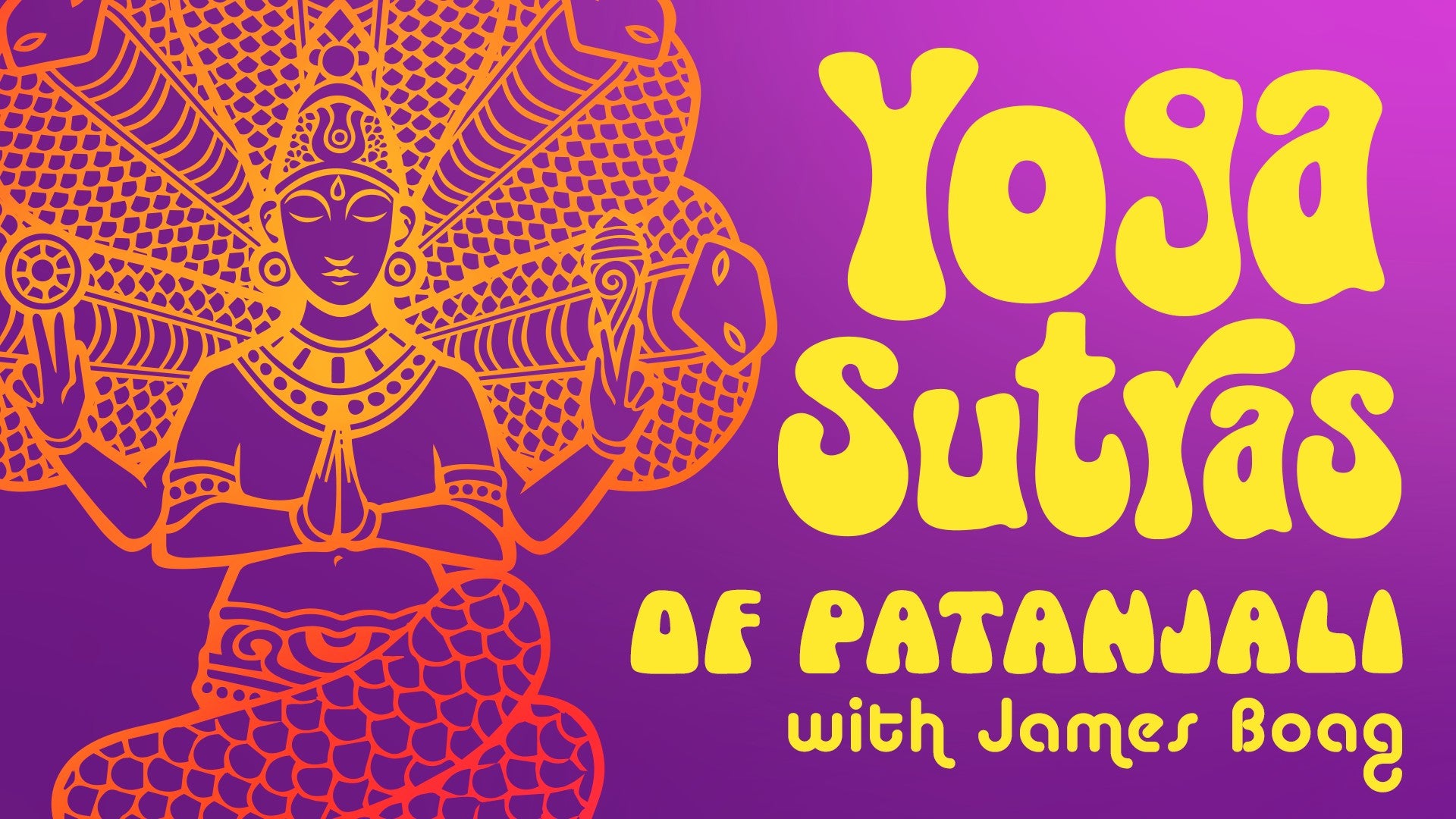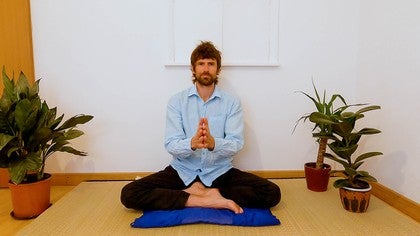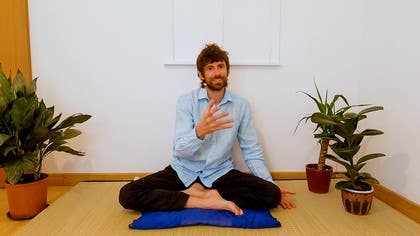Description
Sutra 2.19, which reads vishesha avishesha linga-matra alingani guna parvani, urges us to start from where we are, to work with what is, and practice from the gross to the subtle.
Please see the attached .PDFs to follow along with James.
About This Video
Transcript
Read Full Transcript
So now to Sutra 19, so Patanjali has told us that the scene, the drishya, nature or prakriti, drishya in his parlance, is of the nature of the gunas. He used the words prakasha, kriya and stiti, which have that very active connotation. But nonetheless, it's also very clear that this is potentially giving us, as it were, the yogic take on the sankhy model, how to work with that foundation of the sankhy map of reality. But this is the yoga sutra, it's not the sankhy sutra. So Patanjali is working with this in a practical way.
Yoga is the practical school of Indian philosophy. So Sutra 19, what Patanjali basically does here is he tells us how we need to work with that basic understanding of the sankhy map from gross to subtle. Because sankhy describes the evolution from the subtle source of oneness in outwards into gross estates of manifest existence. But the yoga practitioner has to work from where we are, from gross to subtle. That's the beautiful thing in yoga.
We always start where we are. We cultivate and invite samadhi as best we can, and we work from gross to subtle. As we continue to work from gross to subtle, then that will become a little bit subtler, a little bit subtler. And sometimes we might have to start from a grosser place than others. No problem.
Wherever we are, that's where we begin. So what does this Sutra say, it begins, vishyasha, vishyasha, lingamatra, lingani, guna parvani. So it's basically describing the stages through which the gunas, those three always present forces in nature, the way that they work together to give us different levels or stages of evolution. So let's just have a look at the vocabulary here. So there's a slide that I prepared, so we'll just look at this vocab.
And so we have vishyasha, which is distinct, differentiated, qualified or specialized. Avishyasha, it's not so distinct, it's not so differentiated, it's non-qualified or unspecialized. And then we have lingamatra, so this word linga literally means sign or mark or symbol. Lingamatra means marked or manifest, so it has some type of mark. It is differentiated to some degree, but only just.
It's differentiated from the unmanifest, but otherwise it's undifferentiated. And then alinga is unmarked, unmanifest. This is the order that potentially lays it out in. This is the yogic order working from gross to subtle. But this is the opposite of the sankhya order, which gives us from subtle all the way into manifest existence.
So now I'm going to look at a second slide, and this second slide is going to show us basically the evolution that sankhya gives us from subtle to gross. So here we see mula prakriti, mula basically means the root. So prakriti at its source, in its seed form, the three gunas, sattva, rajas, and tamas are all in equilibrium. And that is the alinga state, unmarked. But then the separation of prakriti from purusha, or some people say they're coming into proximity with each other, creates this perturbation within mula prakriti, and then the gunas start to activate.
And as we've mentioned already, once the gunas start to activate, then we start to have differentiation, the first sproutings of differentiation. This is lingamatra, it's still relatively speaking, barely marked, but it already has some mark of differentiation. And then from there, once we start to then have the sense of ahankara, I mean mine, as different from something else, then we go from one to two to three. And then from that sense of I'm here and I'm not there, and there's something else I'm looking at, then the gunas start to then evolve these evolutes of nature. And so we have the vishesha evolutes, or constituents of reality, which are specialized.
So for example, considering ourselves, we have our indriyaha, our manas, that part of our awareness that links the input from our sense and action powers to our internal awareness. And these are all you can see on the sheet, vishesha, they're all specialized. They are differentiated. It's my sense of hearing as opposed to somebody else's, it's my internal processing as opposed to somebody else's. But then we also have the tanmatra.
When something takes a particular form, then it has that particular specialized form. But the building blocks of reality that allow all these forms to come into being, they are relatively speaking, a vishesha. So I will leave you to peruse the slides I provided at your leisure and hopefully in conjunction with what we're sharing through the presentations, it will make sense. But what does this mean for us practically in relation to Sutra 219? So looking at this Sankhya model, we can see that those words potentially is laid out.
He's laid them out in the opposite order. And so basically what Sutra 19 is telling us, so we can leave the slide for now, what is potentially telling us here? Obviously yoga practice is always from gross to subtle. And what this Sutra emphasizes is that all the way through to the first sprouting of manifestation, even that level of conscious awareness, the gunas can still create that perturbation. So remember back in Sutra number 10, potentially said, then in the 11th, when we want to overcome the kleshas, these things that are getting in the way of yoga, there's the idea, if we take our awareness back to the source, then we can overcome them.
But what this Sutra makes clear and reminds us is that even if we bring our awareness into a very relatively speaking subtle state, if we are still perceiving things in the realm of differentiation and manifestation, the gunas are still active. And so basically, ultimately, in order to recognize our conscious essence, we have to do the work and keep inviting our system into that state where it can actually sit in real equipoise so that the perturbing, disturbing, distorting influences of the gunas, which are always dancing around because rajas is activity. It's always moving. It's always dynamic. We have to invite that state of equipoise in order to really fully recognize our conscious essence.
So just summing up the, let's say, the practical message of this Sutra. In the ordinary state in which we're experiencing reality, we are subject to a constant perturbation by the influence of these gunas. Moving back to the source is the idea that we can attune to that pre-disturbed equistate. That makes sense. We can tune in to that first sprouting of cosmic intelligence, which is also within us.
So if we can bring the whole field of our awareness into that equipoise, then what can start to happen is that we can start to infuse the field of our being with the influence, the steadying, harmonizing, cleansing influence of that equistate. And then, as we continue to cultivate that, we can learn to navigate the realm of constant change from a steadier place, and step by step, start to recognize more of who we are and experience, let's say, more of the spectrum of who we are. So we'll be able to actually tune in to the subtler aspects of who we are, even as we continue to navigate the relatively gross manifest world skillfully. But the basic teaching, always in yoga, gross to subtle. We start where we are, we do not deny where we are, we do not bypass where we are, rather we work with what is, and as we inquire into what is, it will invite us into subtler and subtler inquiring, and the fruit of that subtler inquiry is that we can, steadily, sequentially, reconfigure, recalibrate our understanding of who we are, and transform ourselves into a version of ourselves that is a little bit less limited, and gives us greater access to the underlying conscious essence, the seer, which is what Patandi is going to speak about next.
Yoga Sutras of Patanjali: Life is the Guru
Comments

You need to be a subscriber to post a comment.
Please Log In or Create an Account to start your free trial.








